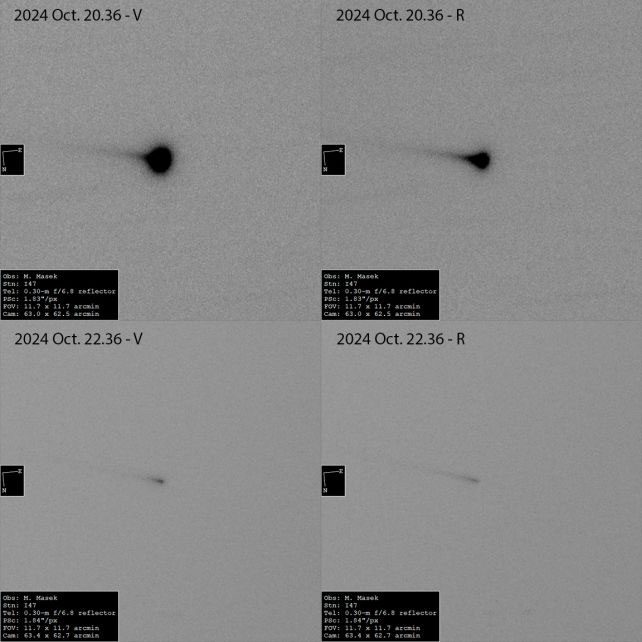An Ancient Object Expected to Shine Brightly This Halloween May Be Facing a Dramatic Demise.
According to Science Alert, a newly discovered object named C/2024 S1 was anticipated to put on a dazzling light show this Halloween.
However, the latest data suggests that its “heart” seems to have vanished.

The ancient object C/2024 S1 may have disintegrated before it could show its most beautiful moment this Halloween – (AI Illustration: Anh Thư).
C/2024 S1 is a rare Kreutz sungrazer comet, expected to reach its perihelion (the closest point to the Sun) on October 28.
The Kreutz sungrazer comets are a group of objects believed to be remnants of a larger comet that appeared over a billion years ago in 1106.
This comet family includes Ikeya-Seki from 1965, which shone nearly as bright as a full moon in the sky.
For C/2024 S1, it was once forecasted to become a bright ball of light in the Earth’s sky due to sublimation during its perihelion phase.
But an abrupt incident occurred: Images of the object taken in October show it brightening with explosive activity before fading, with its nucleus seemingly disappearing.
This event also left behind a trail of dust and gas, which astronomers speculate to be a cloud of cometary debris.
This is somewhat disappointing but not entirely surprising, as this is not the first time Earthlings have witnessed a comet breaking apart right before their eyes.
In 2020, comet C/2019 Y4 disintegrated into pieces as it approached the Sun under the watch of the Hubble Space Telescope.
For C/2024 S1, there were signs of instability earlier, including an outburst with a significant release of dust and gas, causing it to brighten considerably for a few days.
Images taken on October 20 and 22 by amateur astronomer Martin Mašek from the Czech Republic also indicated that at times, the comet’s nucleus seemed to vanish from view.

Images show the comet suddenly fading a few days ago – (Photo: Martin Mašek).
A large piece of the nucleus may survive the disintegration and continue its journey, while the tail may still be visible even if the comet’s nucleus breaks apart, so it wouldn’t be unusual if you still see it—just less bright.
Currently, C/2024 S1 can be viewed with binoculars or small telescopes in the Southern Hemisphere.
After perihelion, if any part of its “heart” survives, it will be visible in the Northern Hemisphere.
Conversely, if the nucleus completely disintegrates as it approaches the Sun, we may still see its long, curved tail faintly, but without the bright, prominent head of the comet as expected.





















































